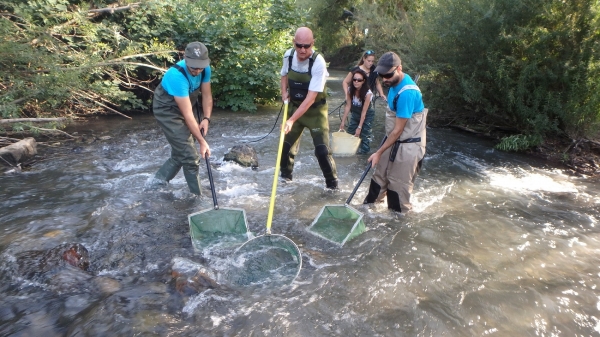They live in rivers and estuaries in Europe and North Africa, but, after crossing the ocean, they lay their eggs in a unique place in the world: the Sargasso Sea, in the Atlantic, 6,000 km from where they started. Afterwards, the fry take advantage of the Gulf currents to return to the coasts, and head up rivers, where they grow, develop and then make the return migration. European eels are natural travellers that engage in one of the longest migrations on the planet. Throughout this extensive journey, they now face multiple threats that directly threaten their survival as a species.
Changes in the currents and the alteration of the plankton in this area reduce the entry of fry along the coasts. The few that manage to reach the rivers –the habitat where they grow– are affected by the reduced quality of their waters, and the fragmentation of the basins. Then there are the hazards of endemic diseases, illegal trafficking and uncontrolled fishing.
The combination of all these factors makes for a grim outlook for a species once found across the entire Continent, but whose survival is now in peril. Today, less than 10% of former populations remain.
The SUDOANG project, in which the University of Córdoba participates, along with eight other European partners from France and Portugal, arose a year ago with the aim of averting this apocalypse for the eel. Part of the eel's biological cycle remains unknown, and certain aspects related to its migration and reproduction also remain a mystery to science. Understanding them represents a real challenge, possibly the only way to save a species of great biological and ecological value, classified as Critically Endangered.
"The project seeks to unify judgments and fill in the gaps of ignorance that exist regarding the species in the Mediterranean area", explains the director of the project at the UCO, Carlos Fernández Delgado. To do this, the eight teams that make up the consortium are drawing samples in different parts of the Mediterranean Arc to see how eels enter rivers after their trips back from the sea, and studying the different facets of their biology.
"The studies are carried out at the same time, in different places and when there are new moons, since this is when there is, ostensibly, the most movement between the rivers and the sea," stressed the Professor of Zoology. Specifically, the University of Córdoba is carrying out analyses in the Guadalquivir, a river where eels have always been extensively fished; and the Guadiaro, still very natural, with limited contamination, and without dams, which prevent the fish’s access to their natural habitats for development and inhabitation.
The ultimate goal is to establish conservation measures for this species based on the information collected, and transfer the results to the sector. The more is known, the easier it will be to protect it. However, saving the eel from this critical danger will not be an easy task. Simultaneously balancing effective protection plans and their commercial exploitation is a challenge, and the sale of this delicacy generates employment for 20,000 people throughout Europe.
For now, one of the most important tasks to save this species is to improve the quality of rivers, and reduce sea pollution. Thus, according to researcher Carlos Fernández Delgado: "perhaps the fate of the eel is linked to our own future and quality of life".


